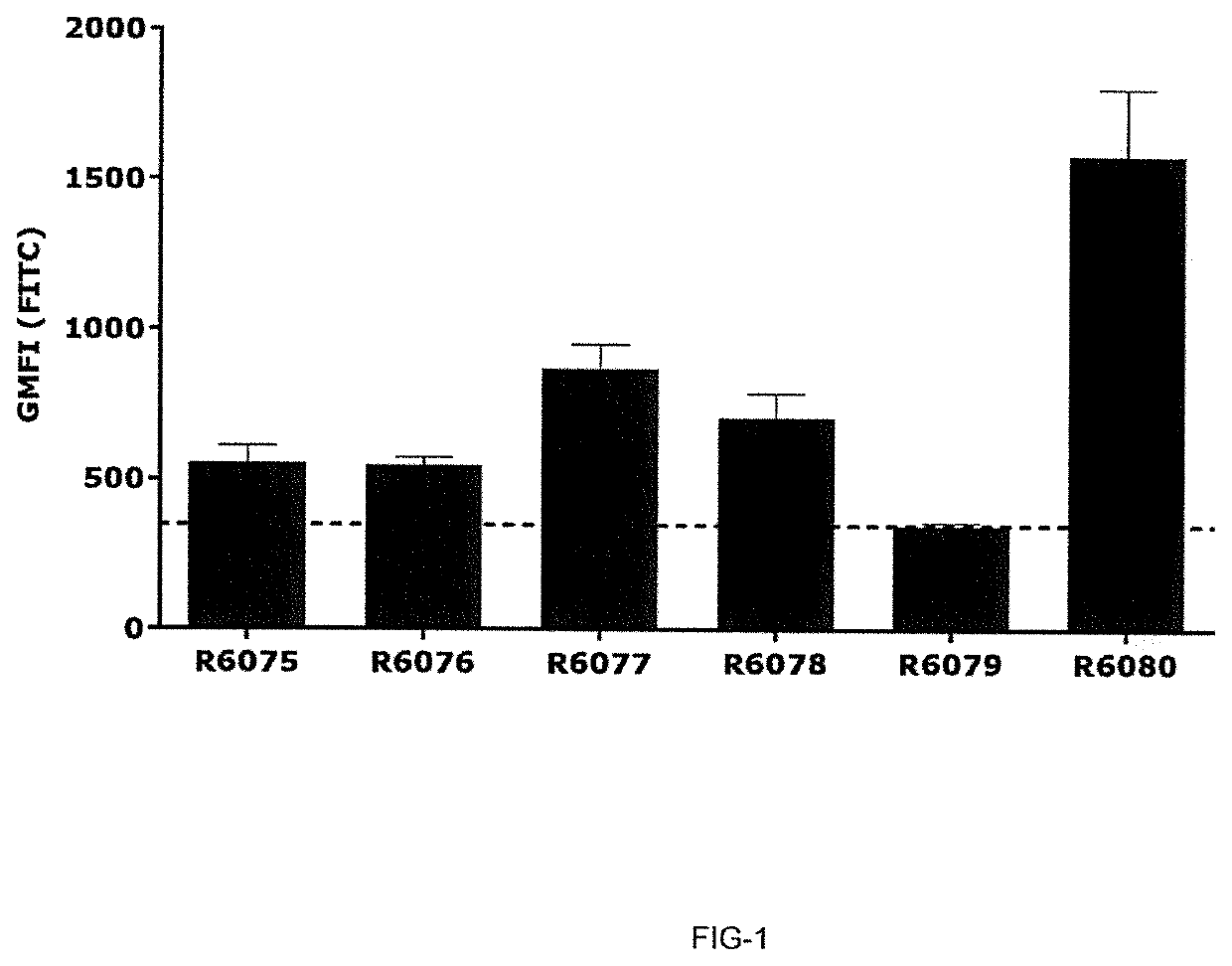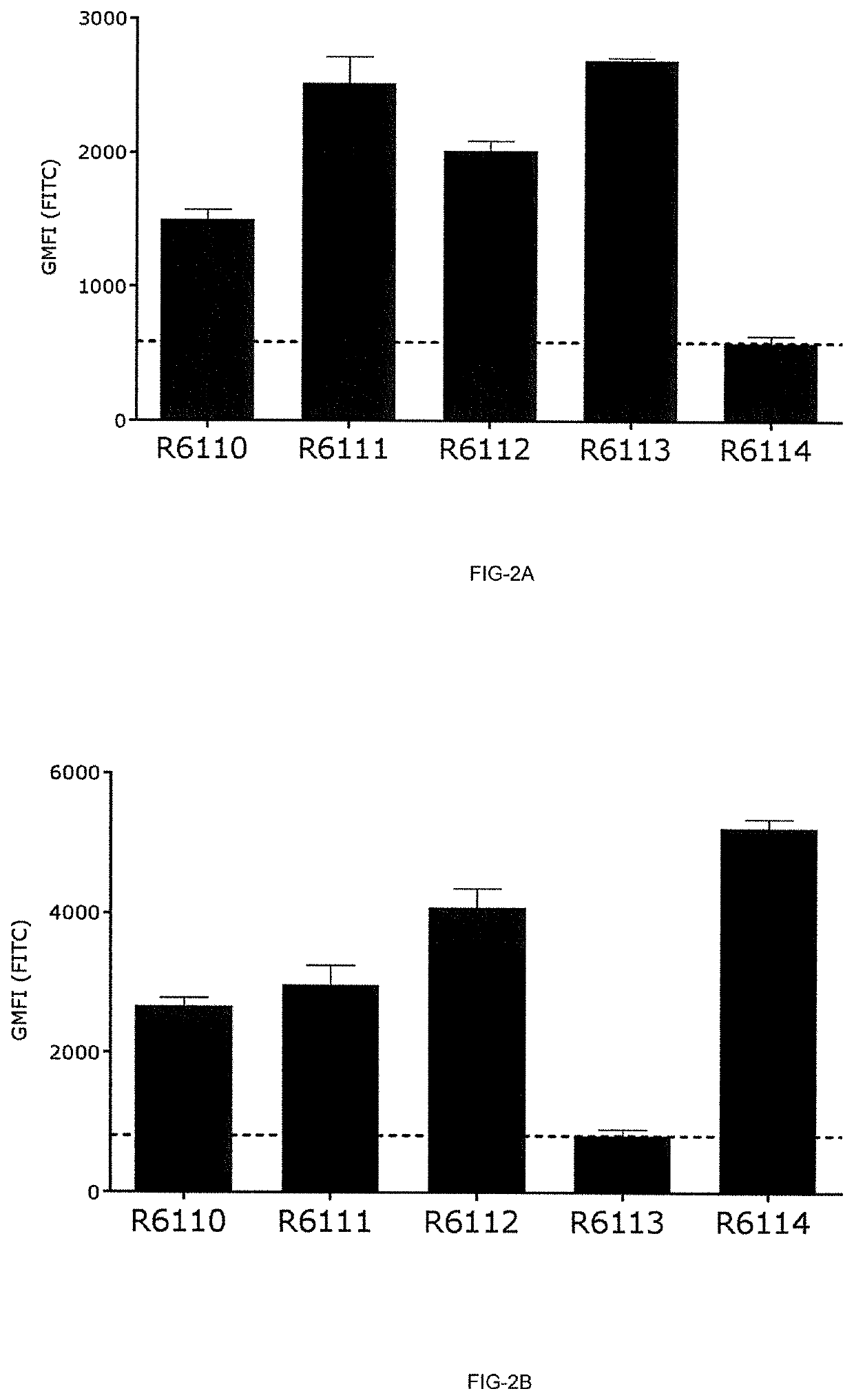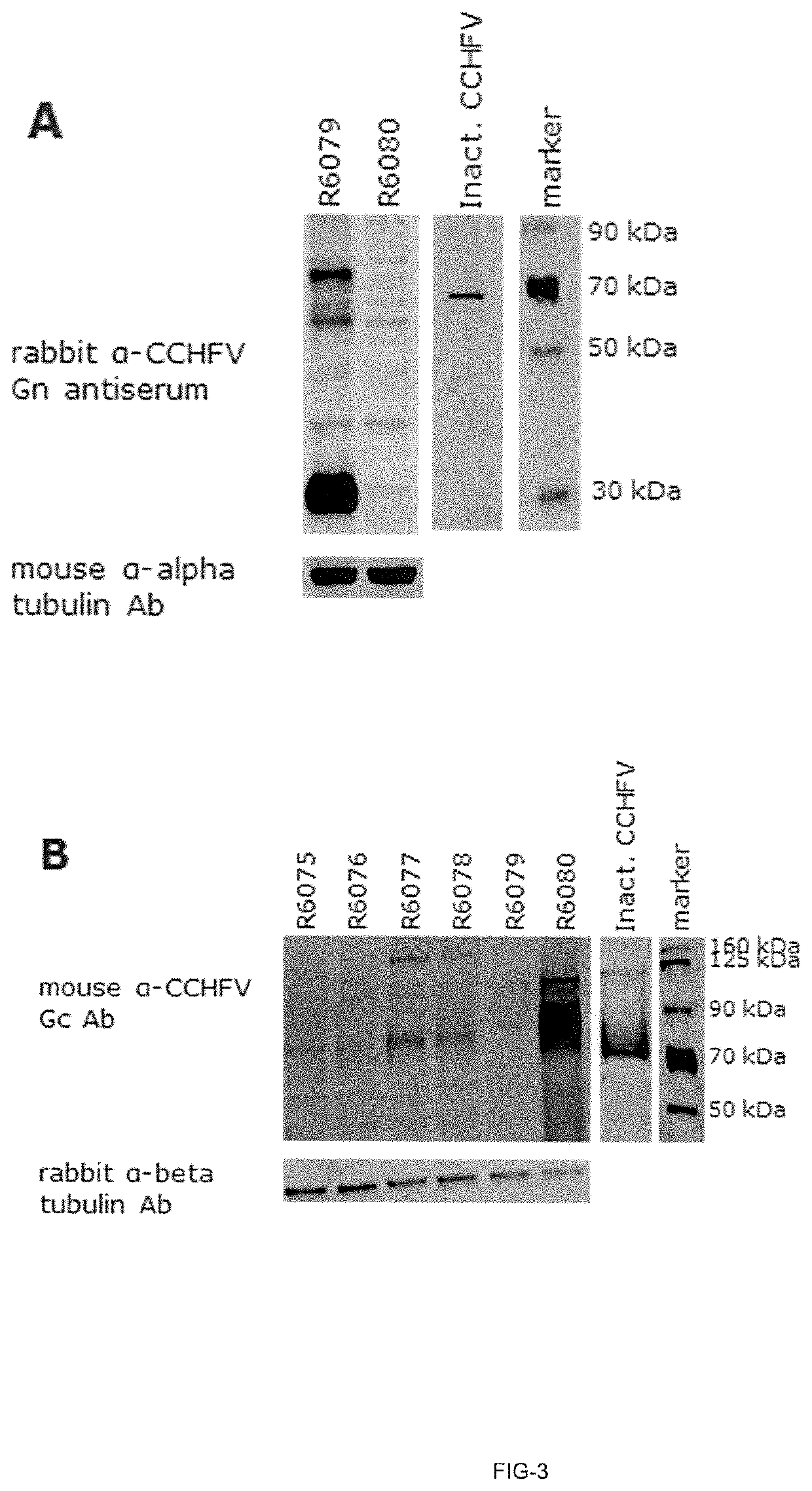Bunyavirales vaccine
a vaccine and vaccine technology, applied in the field ofbunyavirales vaccine, can solve the problems of inability to efficiently protect against rvfv infections, impractical use as a broadly applicable vaccine, and potential teratogenic effects in pregnant animals, and achieve the effect of efficient expression
- Summary
- Abstract
- Description
- Claims
- Application Information
AI Technical Summary
Benefits of technology
Problems solved by technology
Method used
Image
Examples
example 1
on of mRNA Constructs for In Vitro and In Vivo Experiments
[0828]1.1. Preparation of DNA and mRNA Constructs
[0829]For the present examples, DNA sequences encoding Rift Valley Fever virus (RVFV) and Crimean-Congo haemorrhagic fever virus (CCHFV) antigenic proteins are prepared and used for subsequent RNA in vitro transcription reactions. The generated RNAs constructs are provided in Table 10 (SEQ ID NOs: 17050, 17052, 17054-17059, 17390-17397) with the encoded proteins indicated.
[0830]DNA sequences are prepared by modifying the wild type encoding DNA sequences by introducing a G / C optimized sequence for stabilization, using an in silico algorithms that increase the G / C content of the respective coding sequence (according to WO2002 / 098443). Sequences are introduced into a pUC19 derived vector to comprise stabilizing sequences derived from 32L4 5′-UTR ribosomal 5′-TOP UTR and 3′-UTR derived from albumin 7, a stretch of 30 cytosines, a histone-stem-loop structure, and a stretch of 64 ade...
example 2
of Protein Expression in HeLa Cells and Analysis by FACS
[0838]To determine in vitro protein expression of the mRNA constructs (see Example 1), HeLa cells are transiently transfected with mRNA encoding antigens and stained using suitable antibodies against RVFV or CCHV proteins (Aldeveron; customized; raised in rabbits; or reagents obtained from BEI Resources), counterstained with a FITC-coupled secondary antibody (F2765 from Invitrogen or F5262 from Sigma).
[0839]HeLa cells are seeded in a 6-well plate at a density of 400000 cells / well in cell culture medium (RPMI, 10% FCS, 1% L-Glutamine, 1% Pen / Strep), 24h prior to transfection. HeLa cells are transfected with 1 μg and 2 μg unformulated mRNA using Lipofectamine 2000 (Invitrogen). The mRNA constructs according to Example 1 are used in the experiment, including a negative control encoding a water only control. 24 hours post transfection, HeLa cells are stained with suitable antibodies and anti-rabbit or mouse FITC labelled secondary ...
example 2a
f Expression of CCHFV Proteins in HeLa Cells and Analysis by FACS
[0840]The results of the present Example shows that mRNA encoding CCHFV constructs are expressed in HeLa cells after transfection.
[0841]To determine in vitro protein expression of the mRNA constructs (see Table 11 and Example 1). HeLa cells are transiently transfected with 2 μg of the respective mRNA using Lipofectamine 2000. Upon incubation for 18-24 h the cells were harvested and expression of the encoded protein was detected using flow cytometric analysis. Flow cytometric analysis was performed using monoclonal mouse a-CCHFV Gc-specific antibody (done 11E7, BEI Resources) followed by anti-mouse FITC conjugated antibody. Data was acquired using BD FACS Canto II and analyzed via FlowJo. Depicted is the geometric mean of the FITC signal from two independent replicates.
[0842]The outline of the experiment is shown in Table 11. The result of the experiment is shown in FIG. 1.
TABLE 11Expression analysis experiment (Example...
PUM
| Property | Measurement | Unit |
|---|---|---|
| Fraction | aaaaa | aaaaa |
| Fraction | aaaaa | aaaaa |
| Fraction | aaaaa | aaaaa |
Abstract
Description
Claims
Application Information
 Login to View More
Login to View More - R&D
- Intellectual Property
- Life Sciences
- Materials
- Tech Scout
- Unparalleled Data Quality
- Higher Quality Content
- 60% Fewer Hallucinations
Browse by: Latest US Patents, China's latest patents, Technical Efficacy Thesaurus, Application Domain, Technology Topic, Popular Technical Reports.
© 2025 PatSnap. All rights reserved.Legal|Privacy policy|Modern Slavery Act Transparency Statement|Sitemap|About US| Contact US: help@patsnap.com



